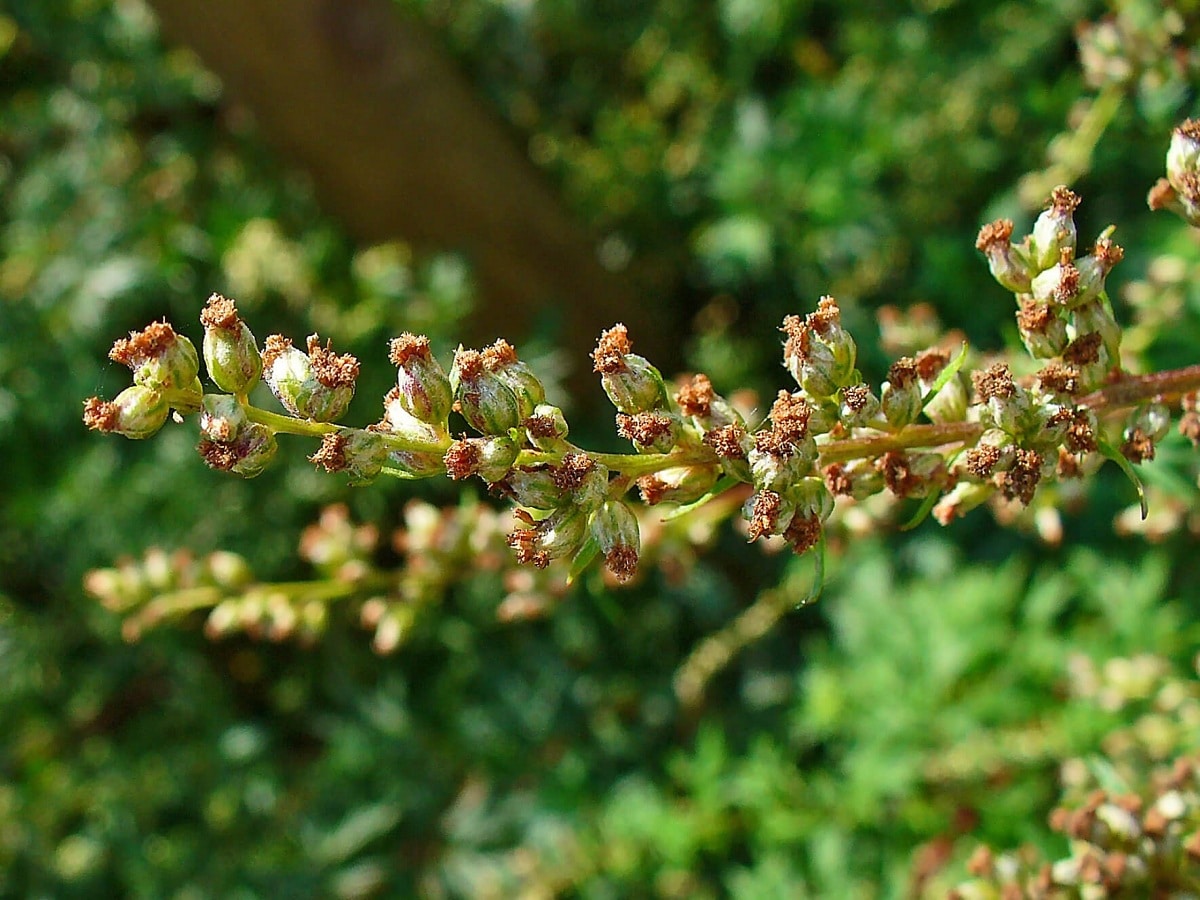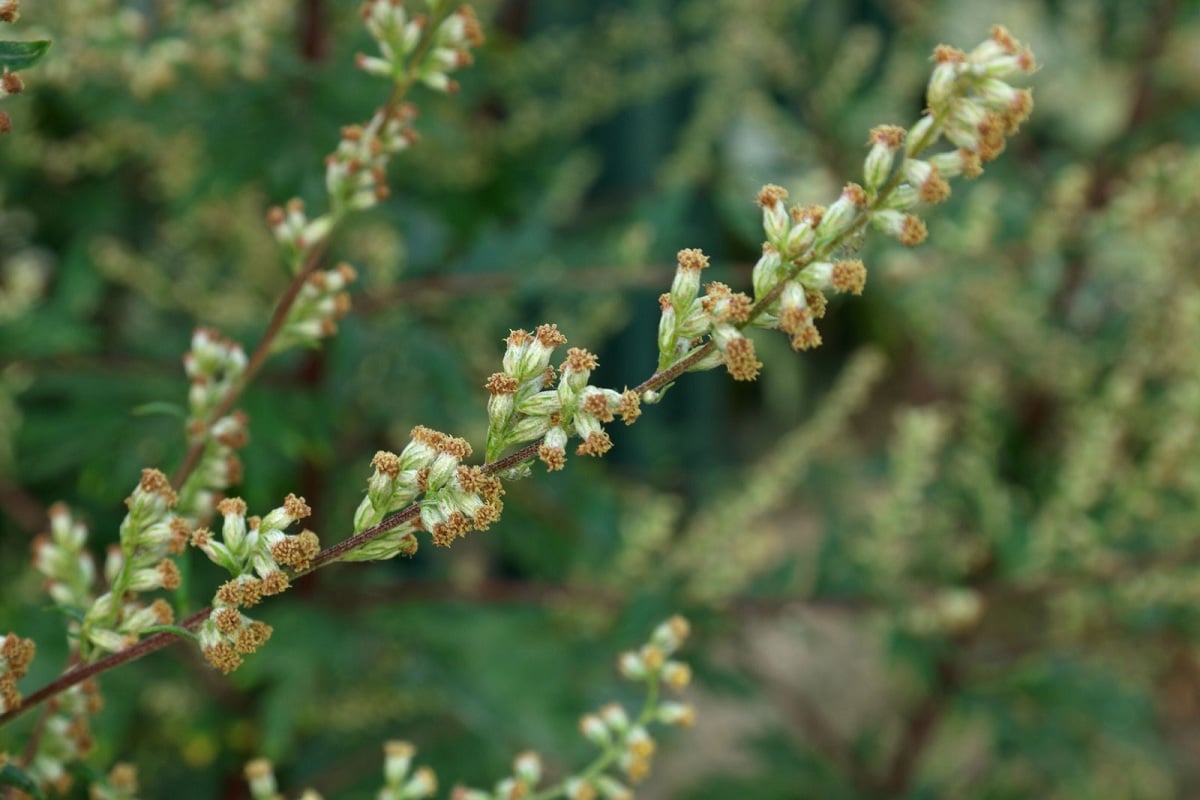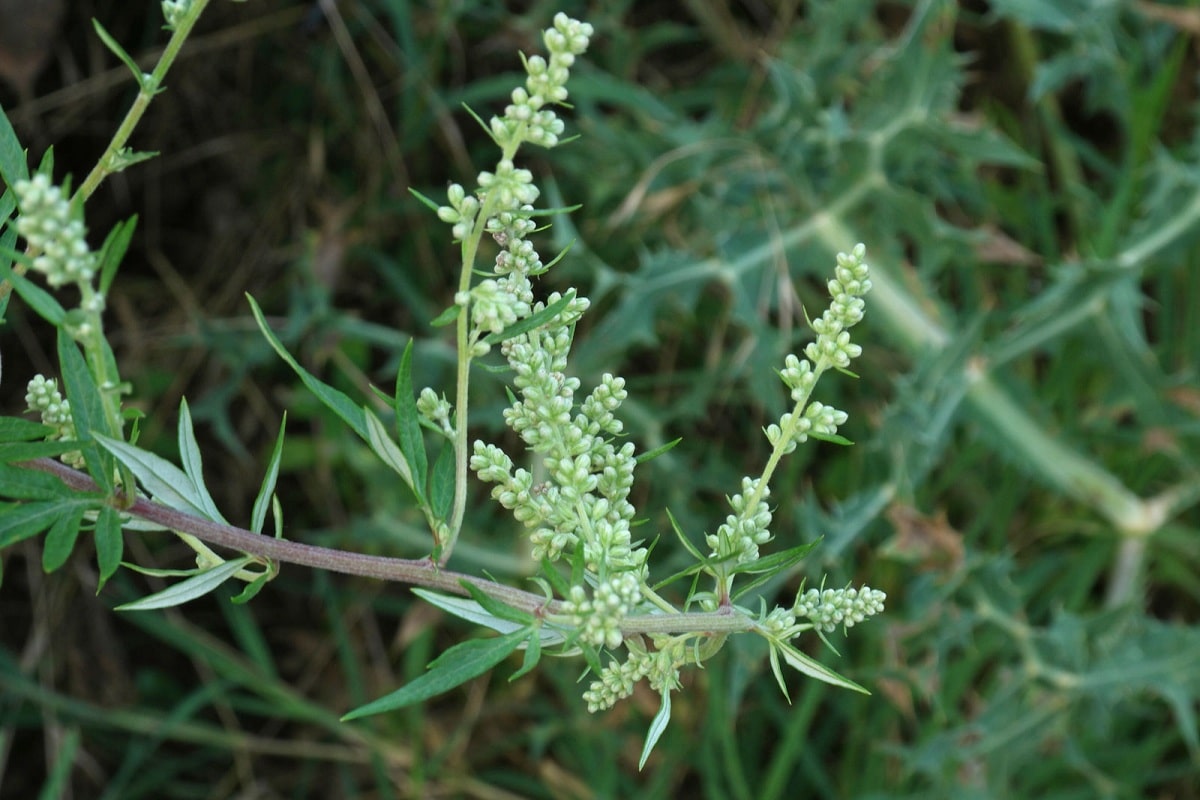
There is a plant that goes by the name of St. John's wort and is popularly known in many places. It's about the Artemisia vulgaris. Its common name is also mugwort and it is known by this name of St. John's wort, although there is another plant that is also known by the same name, such as St. John's wort. They have great medicinal characteristics and it is a life plant native to Europe and Asia. It belongs to the Asteraceae family.
In this article we are going to tell you everything you need to know about the characteristics, properties and cultivation of a Artemisia vulgaris.
Key features

It is a type of plant that, if it grows in good conditions and in its natural habitat, can reach reach up to 2 meters in height. It has a good beauty in its flowers and these grow in clusters during the summer time. Apart from the medicinal uses of this plant, since it has great beauty it can also serve as an ornamental plant in parks and gardens.
It is popularly known for being one of the first medicinal plants that was used by humans. What is used in popular medicine of this plant are the flowers, stems and leaves. Home remedies are made to alleviate various ailments and some milder illnesses. In Chinese medicine the leaves of the Artemisia vulgaris for moxibustion.
It is an aromatic plant that can behave, depending on where it is, like a weed. It also has other common names such as common wormwood, reef grass, chrysanthemum grass, and wild wormwood. Its leaves are petiolated as if they were sessile leaves. There is a great variety of this plant in terms of the colors that we find in the wild. We see that there are colors ranging from deep green to pale green. The flowers are yellowish and the fruits are cyselas.
Apart from its good medicinal characteristics, it is considered one of the worst weeds that affect nurseries. And it is that this plant has a fairly rapid spread thanks to its rhizome systems. It is difficult to control this weed both chemically and naturally. A curious feature of the Artemisia vulgaris is that it has an allelopathic effect quite important nature. This means that this plant generates a kind of radical exudate that is responsible for reducing and inhibiting the growth of other nearby plants. In addition, it also helps to inhibit the growth of some pathogenic bacteria. Therefore, this plant has become a great competitive plant in nature. This allelopathic effect is considered the basis of its evolutionary success.
Medicinal properties of Artemisia vulgaris

The reason why this plant has medicinal properties is because of the presence of active ingredients inside. It has biocomposites such as essential oils, choline, mucilage, tannins and resins that give it great medicinal properties. Let's analyze some of them:
- Analgesic
- Anticonvulsant
- Demolishing
- antibacterial
- Anti-inflammatory
- Soothing
- Tonic
- Aperitif
- Antiseptic
- Antiparasitic
Thanks to these medicinal properties the Artemisia vulgaris It is used for many ailments and diseases. It is a plant quite suitable to use in colds and flu. It also helps to combat fluid retention in those who have a facility to accumulate fluids inside. Its consumption through infusions of both flowers and leaves helps facilitate slower and heavier digestions.
It has also been used throughout history to improve symptoms of bronchitis. It serves to reduce stress and mental and physical fatigue if several infusions are taken a day. For those women who do not have menstruation consistently at the rate they should, this plant can help to cause irregular menstruation and reduce its pain. Another of the quite widespread uses of antiquity is to be able to stop nosebleeds and stimulate kidney function in those who have the most weakened kidneys.
For those who have mild depression, the Artemisia vulgaris to reduce the effects. It improves renal colic, which is quite painful, and helps fight infections. This is due to the property of the exudate that helps prevent the growth of some bacteria. Just as it does not allow bacteria to grow in its environment, it also does so in ours. For animals it helps to eliminate parasites and purify the blood and eliminate toxins.
Helps reduce the effects of vertigo and dizziness in those who suffer from them constantly. However, although this plant has good medicinal effects, its consumption is not recommended for women who are during the time of pregnancy or lactation. It is also not recommended to take for more than two weeks in a row.
Home remedies
We are going to analyze and comment on how to prepare some home remedies that help with some deficiencies and some cases. The first is an infusion. An infusion can be prepared using a teaspoon of leaves for each cup of water. With this infusion we can combat indigestion, menstrual pain, flu or fluid retention. It can also be used to clean, disinfect, and soothe wounds and sores.
Another home remedy is to cause menstruation in women. To do this, a plaster is prepared and placed under the navel. We can relieve muscle aches if we use its oil in the form of an infusion but thicker and apply massages in the area where there is muscle pain. We can create a tincture of this plant to always have it available.
Caring for the Artemisia vulgaris

As we have mentioned before, it is a plant that not only has medicinal effects, but also has a good ornamental value. We are going to analyze the care that this plant needs to stay in good condition.
First of all is sun exposure. This plant needs direct sunlight. It needs many hours of light a day to be able to develop in good conditions. It can withstand drought and frost well, so the waterings will not be too demanding. Avoid puddles at all times when watering and make sure the soil has good drainage.
This plant can develop both in soils with neutral pH and both sandy and clayey texture. It is convenient to pay once in spring so that it can withstand summers well. If you take care of the plant correctly, it can last more than 30 years.
If they lose with this information they can learn more about the Artemisia vulgaris.
Thank you for enlightening us, the information is very interesting ..
Hello Enrique Ramón.
We are glad to hear that you found this information interesting.
Greetings.
I have been taking it for 12 days and I am very well, I have Helicobacter pylori and I think my Health is improving a lot, in addition to a very strong mental and physical fatigue. I sleep like never before. But I don't know how long to take it. The dose for now is one tablespoon of coffee in a daily cup divided into three doses. How long should I take it? Thank you . I have read that it can be toxic.
Hello Paulina.
These consultations are best made to a specialist. We only dedicate ourselves to informing about the characteristics, care, and sometimes if they have medicinal uses we say so, but we do not get into health issues.
Greetings.